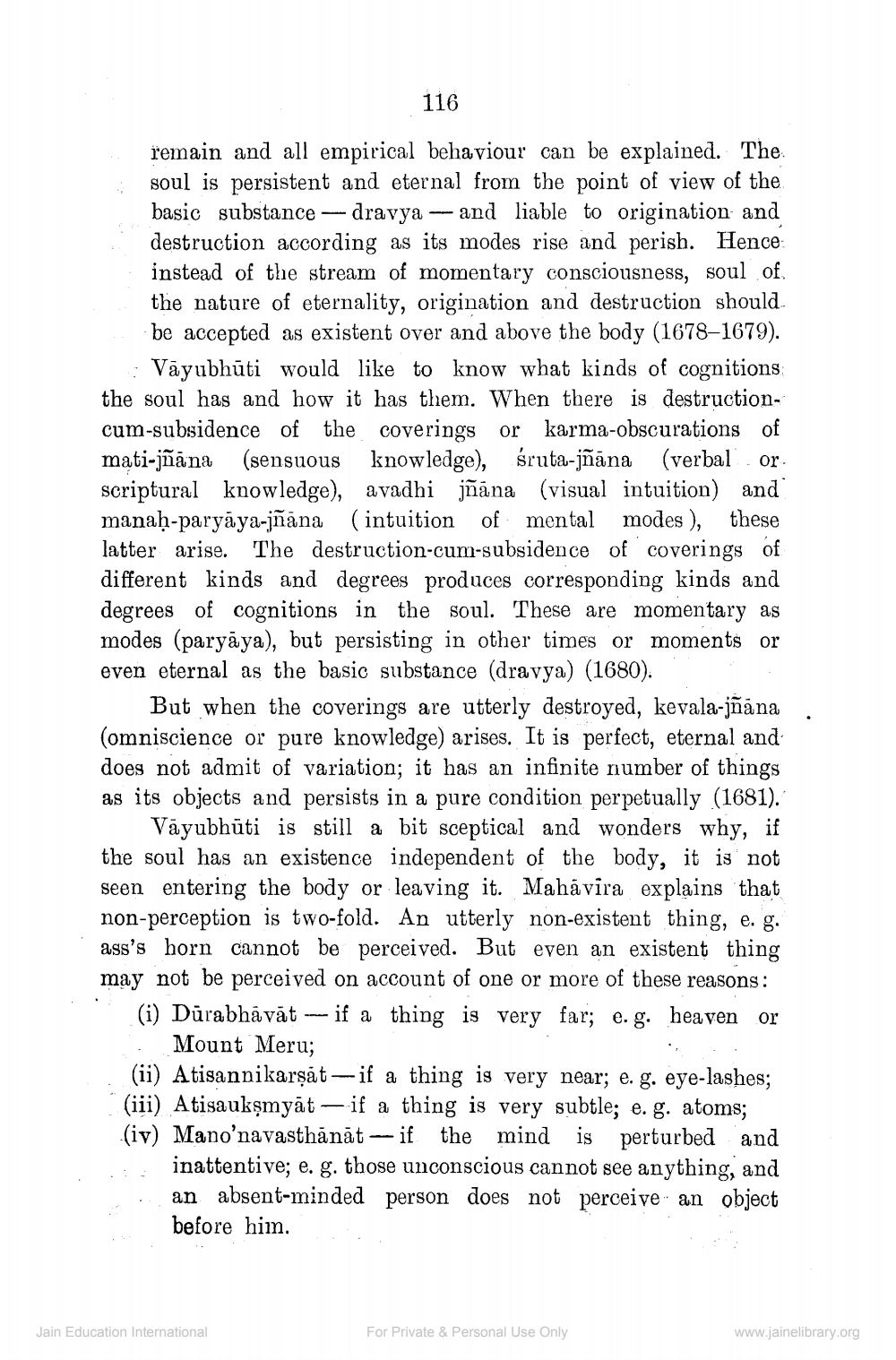________________
116
remain and all empirical behaviour can be explained. The soul is persistent and eternal from the point of view of the basic substance - dravya — and liable to origination and destruction according as its modes rise and perish. Hence instead of the stream of momentary consciousness, soul of. the nature of eternality, origination and destruction should be accepted as existent over and above the body (1678-1679).
Väyubhūti would like to know what kinds of cognitions the soul has and how it has them. When there is destructioncum-subsidence of the coverings or karma-obscurations of mati-jñāna (sensuous knowledge), śruta-jñāna (verbal or scriptural knowledge), avadhi jñāna (visual intuition) and manaḥ-paryāya-jñāna (intuition of mental modes), these latter arise. The destruction-cum-subsidence of coverings of different kinds and degrees produces corresponding kinds and degrees of cognitions in the soul. These are momentary as modes (paryāya), but persisting in other times or moments or even eternal as the basic substance (dravya) (1680).
But when the coverings are utterly destroyed, kevala-jñana (omniscience or pure knowledge) arises. It is perfect, eternal and does not admit of variation; it has an infinite number of things as its objects and persists in a pure condition perpetually (1681).
Vāyubhūti is still a bit sceptical and wonders why, if the soul has an existence independent of the body, it is not seen entering the body or leaving it. Mahavira explains that non-perception is two-fold. An utterly non-existent thing, e.g. ass's horn cannot be perceived. But even an existent thing may not be perceived on account of one or more of these reasons: (i) Durabhāvāt ---- if a thing is very far; e.g. heaven or
Mount Meru; (ii) Atisannikarşåt - if a thing is very near; e. g. eye-lashes; (iii) Atisauksmyāt - if a thing is very subtle; e. g. atoms; (iv) Mano'navasthānāt if the mind is perturbed and
inattentive; e. g. those unconscious cannot see anything, and an absent-minded person does not perceive an object before him.
Jain Education International
For Private & Personal Use Only
www.jainelibrary.org




